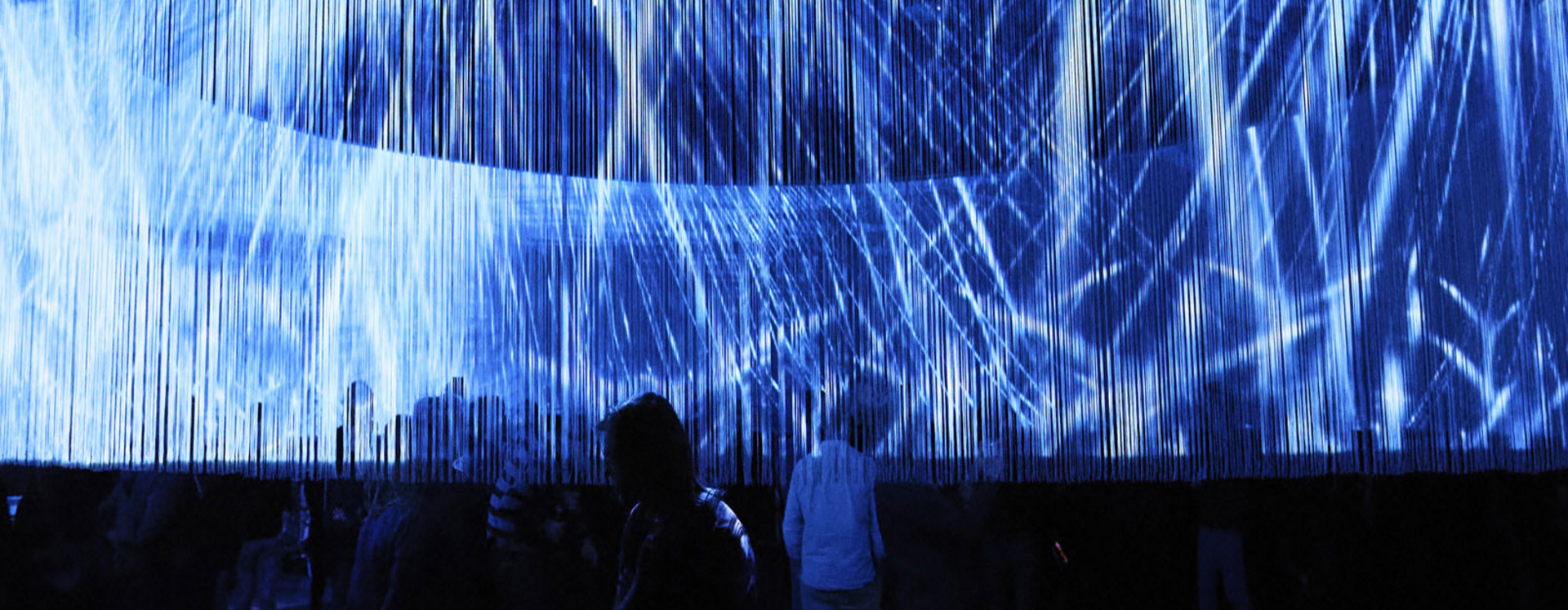Mobile Choreography research project
Mobile Choreography is an innovative method for making films with multiple perspectives. Instead of filming using just one camera, synchronous footage is captured by a preferable minimum of eight people using their smartphones to create material with multiple perspectives. The creative possibilities of employing this technique in the performing arts are many and varied, which prompted IDlab to conduct research into this area.
Look in any direction nowadays and you’ll see a homo mobilus, a human with a mobile phone in their hand. The mobile is now an integrated component of our body and our very existence. Has using mobile phones made us more social or more antisocial and individualistic? Whatever the answer to that question, we certainly spend a lot of time staring mutely at our little screens!
Mobile Choreography sets us in motion again, using our smartphones as part of a physical group –to create together. This is social filming, using devices that we are deeply attached to – and the video and audio quality is getting ever-closer to professional quality.
The Mobile Choreography 2019 project operates and develops in the artistic, technological and social domains. We believe it is important to show that the smartphone – one of the most popular technological resources in our daily life – has great potential as an artistic tool that can stimulate creativity – and that it can be used to foster connections between people from diverse backgrounds and disciplines.
PIPS:lab’s Mobile Choreography 2019 project includes:
- Further development of the Mobile Choreography App into a professional tool.
- A theoretical study of the context of films made using smartphones and the multi-perspective approach to reality in modern art and in film. We are using this study in educational models and as input for a six-day gathering, or ‘tiade’.
- A six-day ‘tiade’ of co-professionals from various disciplines interns from arts courses. A tiade is a non-hierarchical gathering of like-minded participants whose goal is to explore disciplinary boundaries.
- An exciting public intervention with performative editing during Cinedans Festival 2019 in EYE Amsterdam. The intervention will be a collaboration with academy students.
- Further development of the functionality of the Mobile Choreography website into an international platform for Mobile Choreography.
Mobile Choreography’s strength lies in its accessibility – after all, everyone’s got a smartphone. You the participant are simultaneously a choreographer, camera operator and dancer. In a playful way, this method brings people and disciplines together to collaborate, to move, to discover.
It turns filming into a social and collective activity; a co-creation. As well as offering physical and social interaction, Mobile Choreography could also give rise to new narrative structures such as interactive cinema with parallel storylines.
Research for Mobile Choreography started in 2016 with a workshop at Codarts dance academy and a second workshop at Cinedans festival. The research question was this: How can you employ smartphones as a choreographic tool when making films in general and dance films in particular? The result of the workshops, a multi-perspective film made by the participants, was screened in 2017 at Codarts Research Festival and at Cinedans.
This research has led to the development of a methodology, study material and a rough version of the Mobile Choreography App. It also explored the potential of ‘performative editing’, which involves editing and playing material while it is being recorded, whether on a table top or as an installation in the space, for example. It is also possible to make the editing process itself performative.
In 2017 we rounded off our initial research into Mobile Choreography with a number of interesting conclusions:
• Mobile Choreography offers new ways of storytelling – further discoveries can be made and researched through appropriate forms of interdisciplinary collaboration.
• Mobile Choreography creates connections between participants in a speedy and physical manner. We want to explore the potential for public interventions in which we work with large numbers of people, such as an audience in an auditorium.
• Performative editing is a highly innovative concept. Further development could lead to the unleashing of its full potential.
• The education sector has expressed a great deal of interest in Mobile Choreography. Our teachers are being approached by various departments – including Film and Dance – with requests for a Mobile Choreography workshop.
The Mobile Choreography workshops are coordinated by dance scholar Zeynep Gündüz, who is attached to both the AHK and Codarts. Working together with PIPS:lab she oversees and develops practice-based research into Mobile Choreography. A trained ballet dancer, Zeynep gained her PhD in 2012 with her doctoral thesis Digital Dance: Digital dance: (dis)entangling human and technology.
